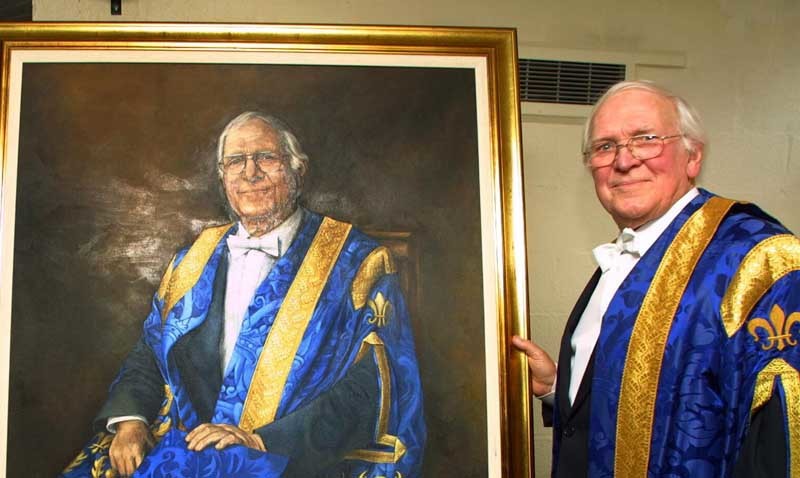Nobel prize-winner and former chancellor of Dundee University Sir James Black has died at the age of 85.
Sir James was credited with the invention of propranolol in 1962, a beta-blocker that is now used to treat heart attacks and angina and which has saved countless lives around the world.
Dundee University principal and vice-chancellor Professor Pete Downes paid tribute to Sir James yesterday.
He said, “Sir James was known to many of us here over many years and we will miss him greatly.
“During his time as chancellor he served the university with commitment, wisdom, grace and distinction.
“He was a great scientist, who took a keen interest in the development of our research here at Dundee, but he was also a great man to know.
“He inspired so many people, from students to senior academics and industrialists, right up until the last few months of his life.”
Born in Uddingston in Lanarkshire, Sir James grew up in Fife and attended Beath High School in Cowdenbeath before studying medicine at St Andrews University.
During his time as a student, Sir James studied at University College, which later became Dundee University.
After graduation he joined the physiology department at St Andrews University before travelling abroad to lecture at the University of Malaya.
He returned to Scotland in 1950 and worked in both industry and academe for the next 42 years — including spells with ICI, Smith Kline and French, the Wellcome Foundation and both University and King’s Colleges in London.
During this time he helped develop beta-blockers and the first effective non-surgical treatment for stomach ulcers.
Sir James was made a Knights Bachelor in 1981 and was appointed to the Order of Merit, the highest individual honour available in the UK, by the Queen in 2000.
He was elected a Fellow of the Royal Society in 1976 and was awarded the Nobel Prize in Medicine together with Gertrude B. Elion and George H. Hitchings for their work in drug development.
Medals and awards charting his career went on display at the National Museums of Scotland in Edinburgh last year.
In 1992 he was appointed chancellor of Dundee University, a position he held until May 2006.
The previous year he became the first recipient in the university’s history of an honorary doctor of science degree (DSc).
In 2006 the university opened the Sir James Black Centre, a building that is home to hundreds of scientists carrying out inter-disciplinary research in the college of life sciences.
